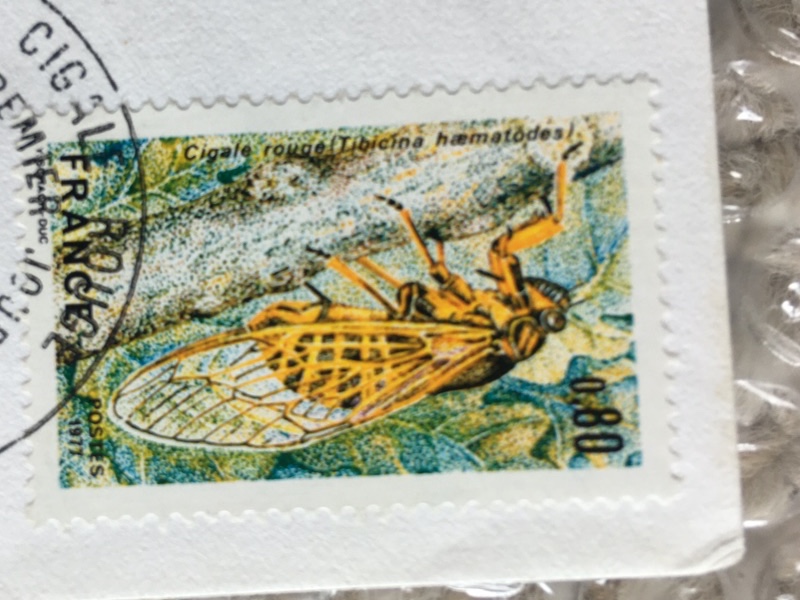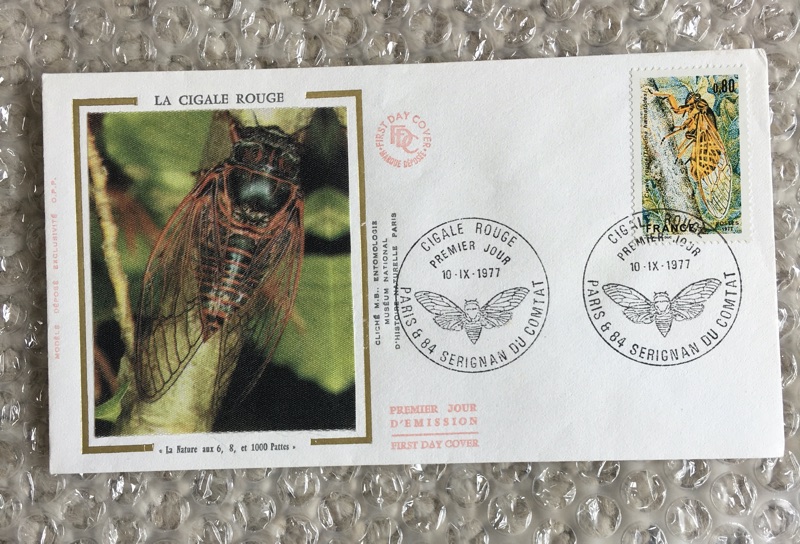Here are some Neotibicen lyricen molting in New Jersey July 2021.
Rich caramel eyes; blues & pinks in pronotal collar, legs, and mesonotum; green wings (that will stay green) and orange abdomen.
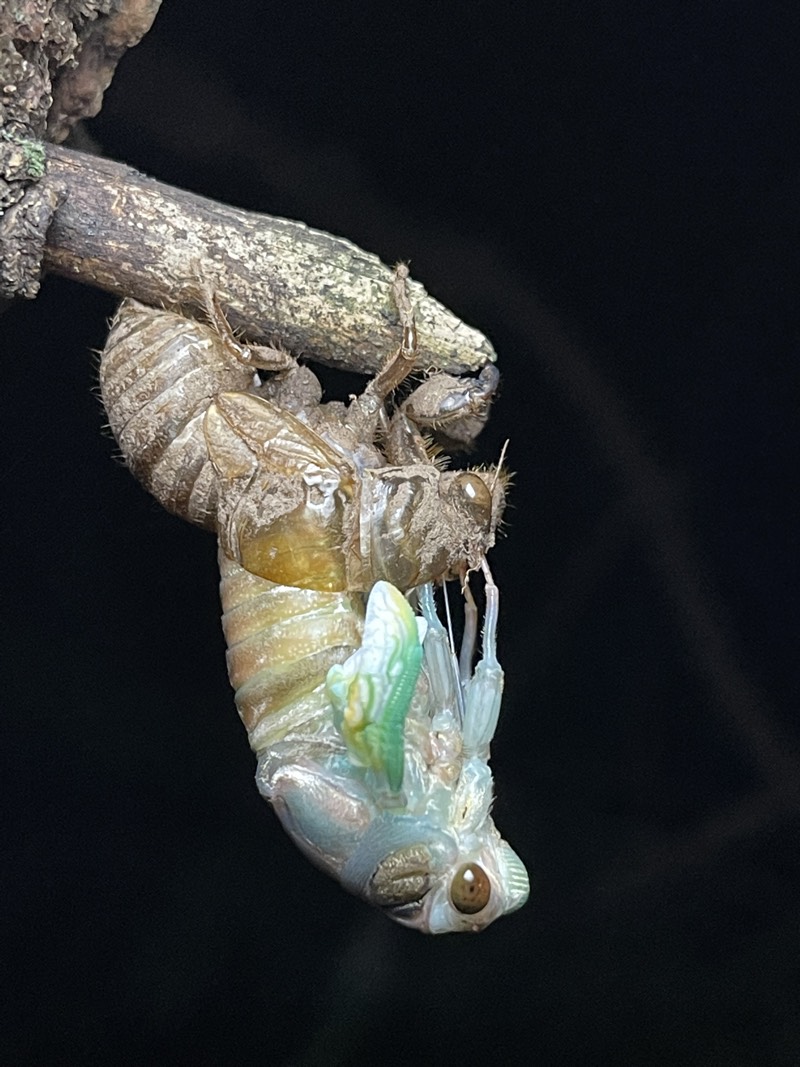
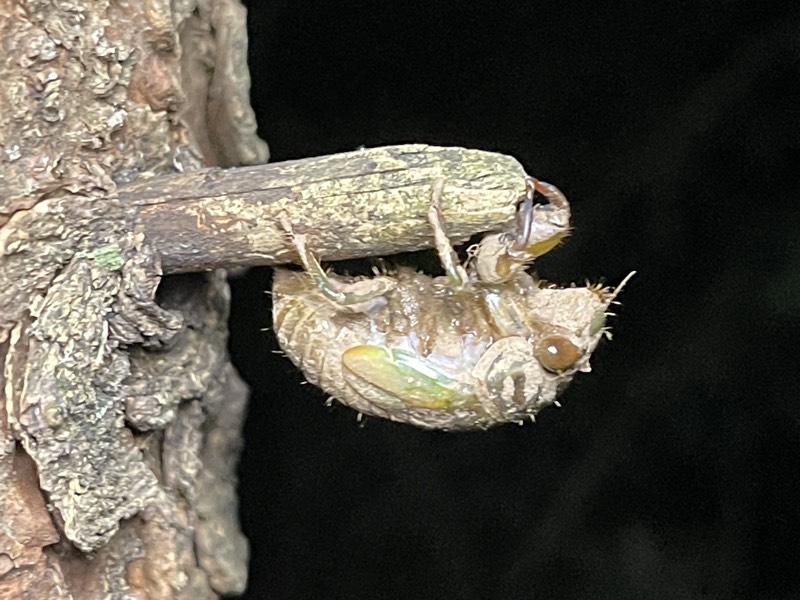

Locations where cicadas can be found, including countries and continents.
Here are some Neotibicen lyricen molting in New Jersey July 2021.
Rich caramel eyes; blues & pinks in pronotal collar, legs, and mesonotum; green wings (that will stay green) and orange abdomen.



Here’s some photos of Molting Neotibicen tibicen tibicen cicadas taken in New Jersey in July of 2021.
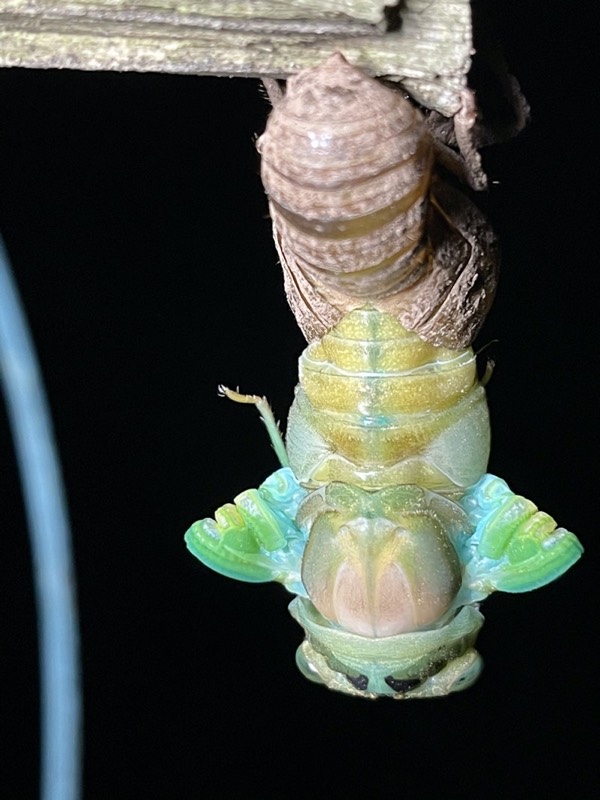
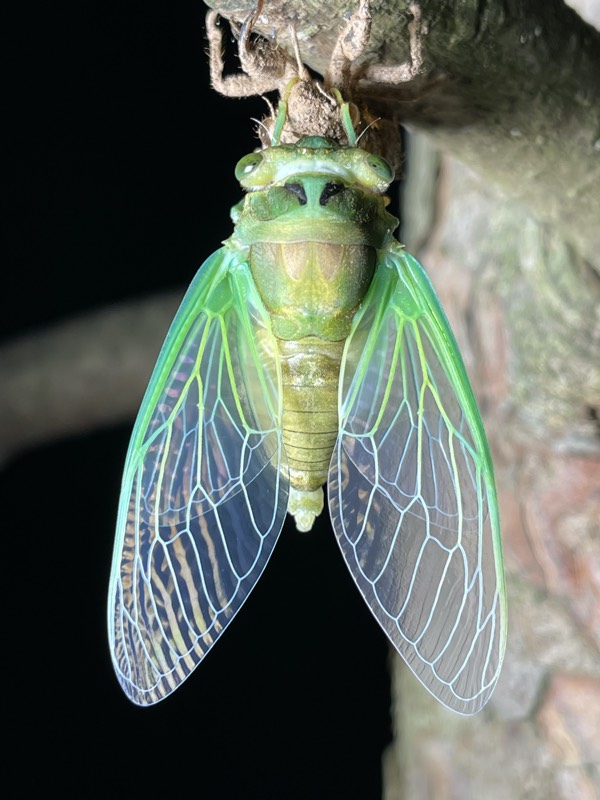

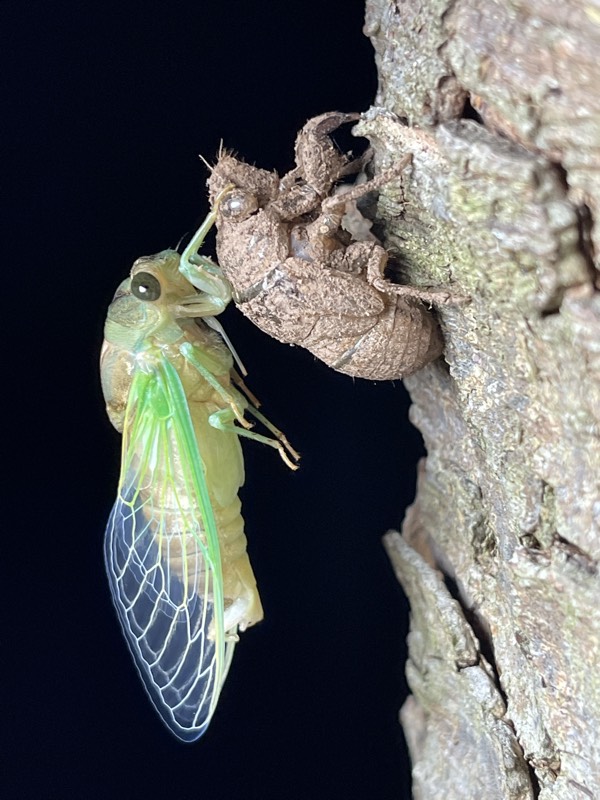
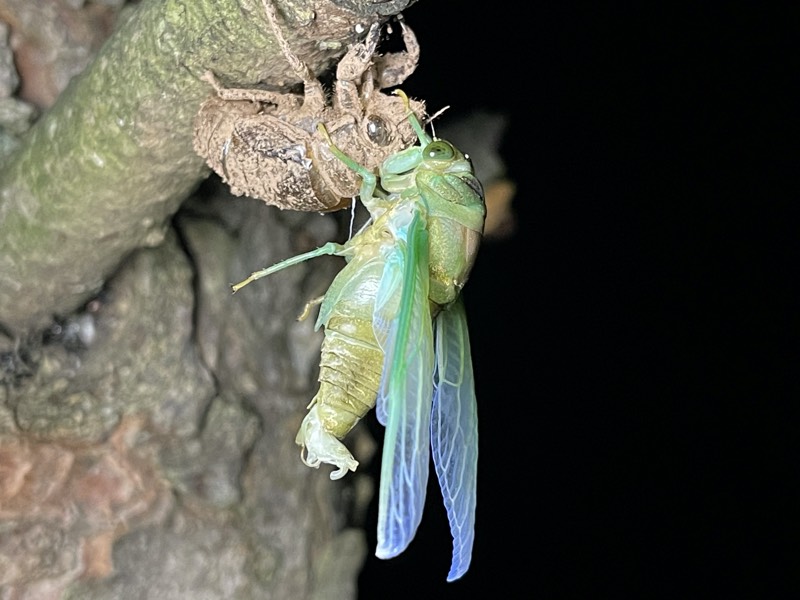
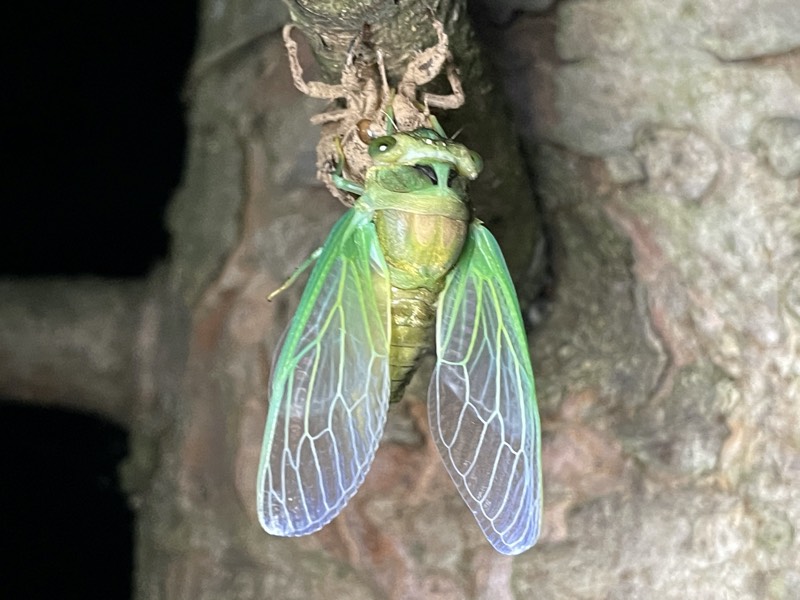
“Unique Cicada” (that is how Chrome translates it) is a large blog featuring many photos of cicadas from around the world. The site is owned by @musinomushi on Twitter. Instantly one of the premier cicada websites.
The site is categorized by cicada tribes, for example, Carinetini, Cryptotympanini and Zammarini.
Here’s what it looks like translated to English by Chrome.
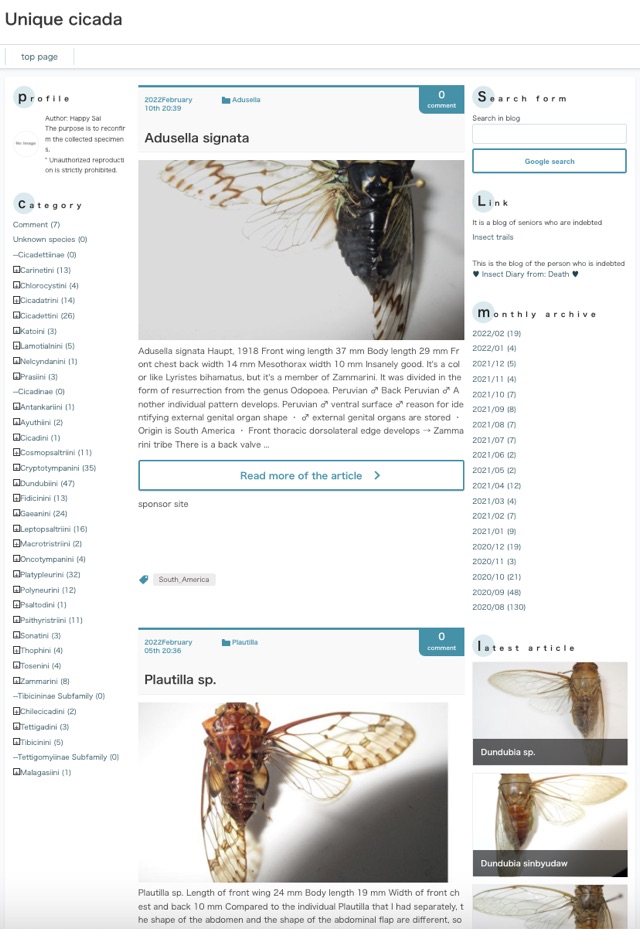
It isn’t often we get a single cicada publication as complete and awesome as Cicadas of southern Africa: An illustrated guide to known species by R.D. Stephen. The document is 224 pages long and includes color photos of dozens of cicadas with maps & text descriptions. This guide covers cicadas from Botswana, Lesotho, Namibia, South Africa, and Zimbabwe.
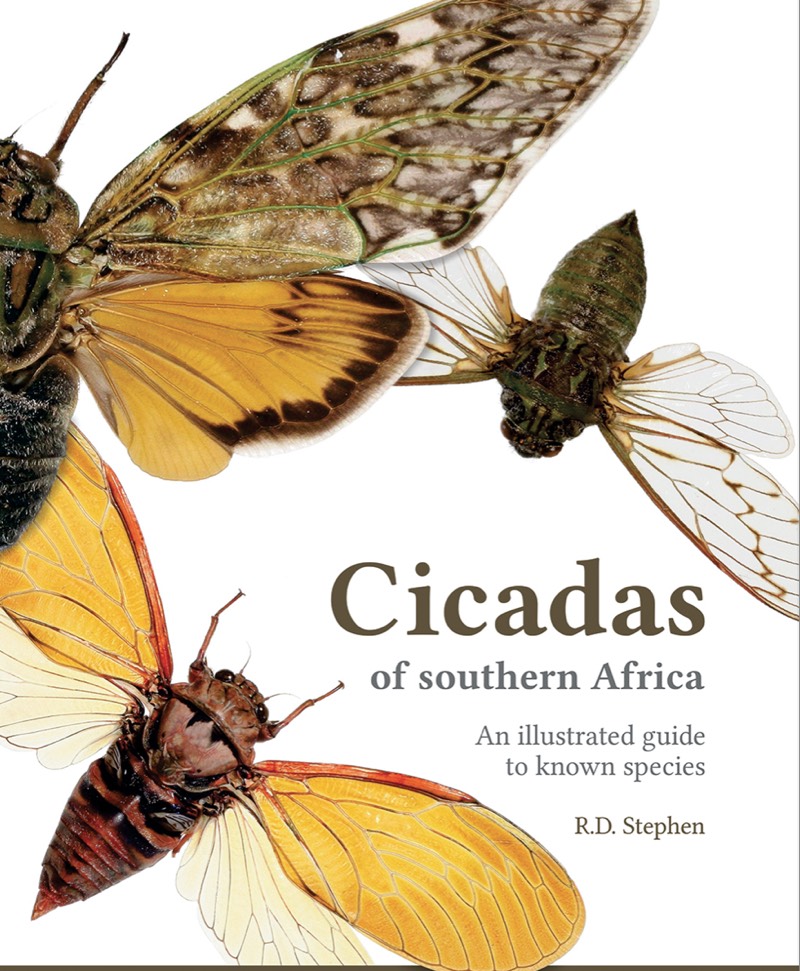
Thanks to beetledude in iNaturalist and David Emery for letting me know.
A few years back a project was launched to discover if the New Forest cicada (Cicadetta montana) still exists in England. It once existed in southern England for sure, but seems to have gone extinct. To date, none have been found.
Recently a cicada was reported found in England on iNaturalist, appearing to belong to the genus Tibicina. The best resource for European cicadas is SONGS OF EUROPEAN SINGING CICADAS. Looking at the navigation of the website it looks like there are nine Tibicina in Europe (maybe more). The cicada on iNaturalist is brown with orange highlights: u-shaped marks on its mesonotum, an orange outline of its pronotal collar, and an orange line down the middle of its head. Wing veins appear brown & black and appear to be warped during the molting process. It might be teneral — still soft from the molting process — and so its adult colors have not fully developed.
So — is it a native to England or a stowaway in some cargo from mainland Europe?
The Twitter account @MorphoCicada posted this on Twitter, which alerted me to the matter.
Magicicada.org was an amazing website filled with information about Magicicada periodical cicadas and backed by cicada expert, John Cooley.
The site now has a new address and look: Cicadas @ UCONN (https://cicadas.uconn.edu/). Bookmark it in preparation for the 2021 Brood X emergence.
UCONN (University of Connecticut) has other cicada websites such as The Simon Lab and Cicada Central.
Three new species of cicadas have been discovered in Meghalaya, India:
Mata meghalayana, Mata lenonia, and Mata ruffordii.
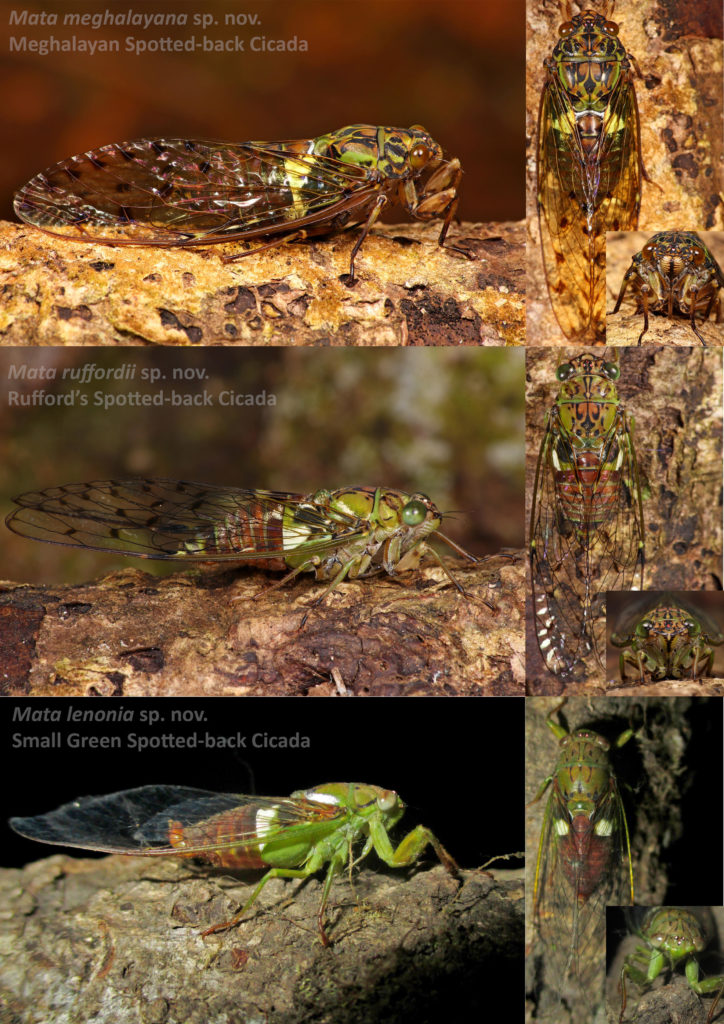
Photo courtesy of Vivek Sarkar.
Access the paper on Research Gate or Zootaxa Vol 4908, No 1.
Paper title: Description of three new species of the genus Mata Distant, 1906 (Hemiptera: Cicadidae: Cicadinae: Oncotympanini) with notes on their natural history from the Indian state of Meghalaya, India
Authors: Vivek Sarkar, Cuckoo Mahapatra, Pratyush P. Mohapatra, Manoj V. Nair, Krushnamegh Kunte
Abstract: “Three new species of the Asian genus Mata Distant, 1906 (Hemiptera: Cicadidae) viz. Mata lenonia sp.nov.; Mata ruffordii sp.nov. and Mata meghalayana sp.nov. are described from the Indian state of Meghalaya. Keys and taxonomic descriptions of these species are provided with detailed accounts of their natural history and acoustics.”
This page features information about common cicadas of Australia researchers, and websites dedicated to the cicadas of Australia. Australia has the best cicada names!
The Bladder Cicada can be sound in eastern Queensland & NSW1, can be found September-January, peaking in October2. It is called a Bladder Cicada because of its large abdomen.
Cyclochila australasiae can be found in eastern Queensland, NSW and Victoria, and most emerge between September & December1, but peaking in November2.
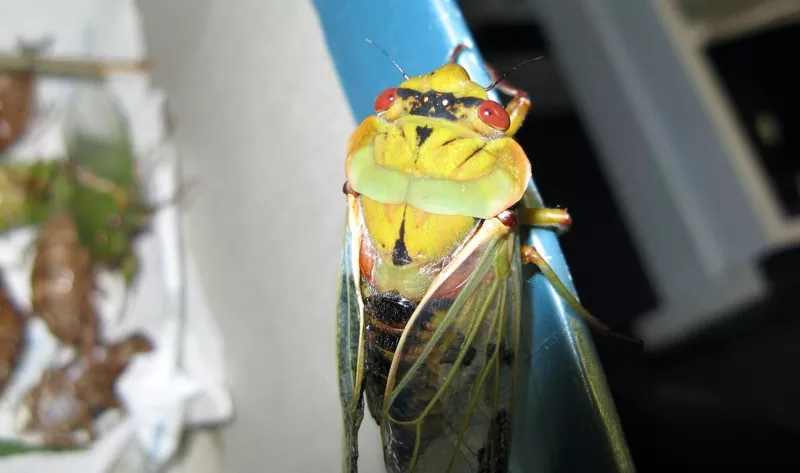
Photo by Kevin Lee. Yellow-Green Green Grocer with Mask.

Photo by Tom Katzoulopolopoulous.
The Bagpipe cicada can be found in the Northern tip of Queensland1, from October to February, but they’re most common during January2.
The Cherry Nose cicada can be found in Eastern Queensland, NSW, and a small part of South Australia, and is found November-February1, but is most common in December2.
The Double Drummer can be found in parts of eastern Queensland and Eastern NSW, from November to early March1. Peaks in December.
The White Drummer cicada can be found in eastern Queensland and NSW, from November to April, but they are most common during December and January1.
When: January.
The Redeye cicada can be found in eastern NSW, Victoria, and Tasmania, and are most abundant in late November and December1, but can be found until February2.
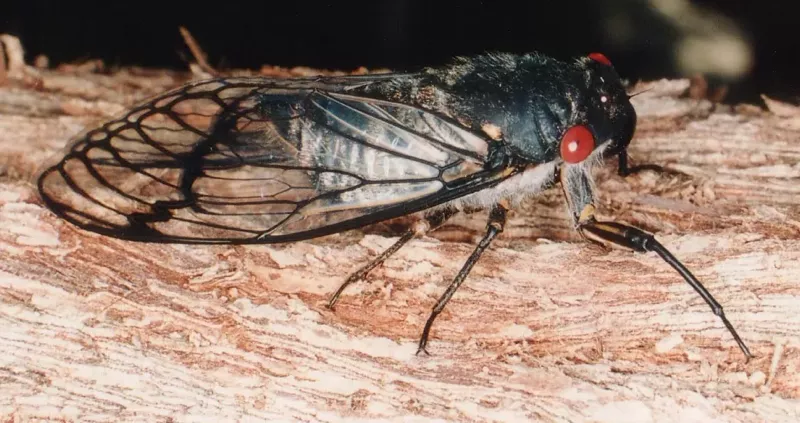
Photo by David Emery.
When is it out: Nov-Jan.
The Floury Baker can be found along the coast of Queensland & NSW. Adults are most common in late December and January1.
The Diemeniana euronotiana can be found in eastern NSW, south-eastern Victoria, and Tasmania. They are most common from late November to January1.
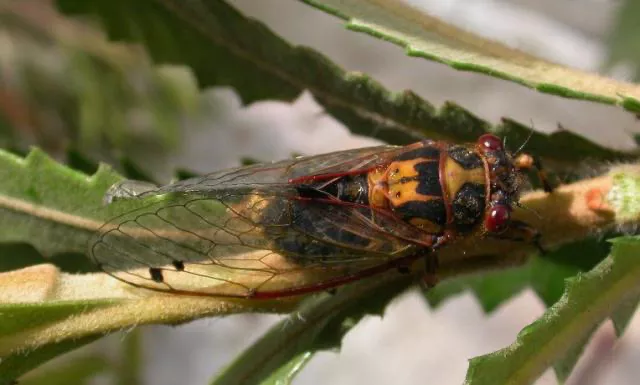
Diemeniana euronotiana. Photo by David Emery.
Out: January-May.
Date and location:
1 Moulds, M.S.. Australian Cicadas Kennsignton: New South Wales Press, 1990.
2 iNaturalist.com.
David Emery is a cicada researcher and has contributed many of the images you see on this website.
Use this amazing image by David Emery to identify some of the most well-known Australian cicada species:
Nathan Emery released a cicada book called “A photo guide to the common cicadas of the Greater Sydney Region”. You can buy it online.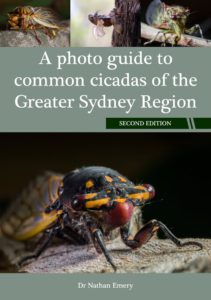
Four new cicadas described in Australia! Here are the details:
Paper: Four new species of cicadas in the Yoyetta abdominalis (Distant) species group (Hemiptera: Cicadidae: Cicadettinae) from southeastern Australia
Abstract:
Four new species are added to the Yoyetta abdominalis (Distant) species group: Y. douglasi sp. nov., Y. enigmatica sp. nov., Y. loftyensis sp. nov., and Y. ngarabal sp. nov. Calling song descriptions and morphological descriptions are provided for each species. An updated key to male specimens is also provided for the species group.
Author: Lindsay W. Popple; David L. Emery
Year: 2020
Journal: Records of the Australian Museum
Publisher: The Australian Museum
Link: https://journals.australian.museum/popple-2020-rec-aust-mus-724-123147/
More info on Dr. Popple’s website: Restless Firetail, Mt Lofty Firetail, Glade Firetail, and Grampians Firetail.
Here is a snapshot of one of the newly described Australian #cicadas, Yoyetta enigmatica. An elusive beast that calls mainly in flight at altitudes above 800m, from border of Queensland/New South Wales south to Hunter region. https://t.co/MPnUlkDFso pic.twitter.com/9bjyVr7a1W
— Lindsay Popple (@_DrPop_) August 15, 2020
Here’s a Tibicina haematodes (Scopoli 1763) stamp from France:
